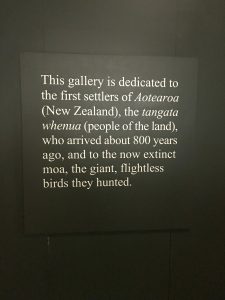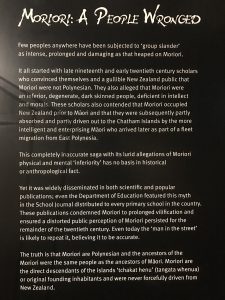In this region, there is less than a 5% occupation of the “native” Māori people, but we went to Christchurch to the botanical gardens and to the Cantebury museum, and learned about the first settlers of the Chatham islands and the New Zealand archipelago. The Moriori people were polynesian and the first to live on the islands, and lived by a code of non-violence and passive resistance. When the Māori people who were linguistically and genetically different invaded, they hijacked a European ship, carried 500 Māori people armed with guns to the land and enslaved, murdered, and cannibalized the Moriori people. A council of Moriori elders convened and discussed the invasion that was occurring and decided that “the law of Nunuku (their nonviolent and passive ideals) was not a strategy for survival to be varied as conditions changed; it was a moral imperative.” The Māori people forbade the speaking of the Moriori language and desecrated and ruined their sacred sites.
On the New Zealand currency, the country is referred to as Aeotearoa, the Māori name for the country which means “land of the long white cloud.” The long white cloud is of course the cloud that is always hanging over the southern Alps because of the weather patterns and pressure differences that are always present. Today, there is a wide debate on whether or not to refer to the country as “Aeotearoa” because of the brutal genocide that the Māori people did to the actual indigenous people of the islands. There are such few Moriori people left in existence that there aren’t a whole lot of people to stand up for the oldest culture on the islands but in my opinion, that shouldn’t be the deciding factor on whether or not to continue the use of a word with such dark history.


Leave a Reply